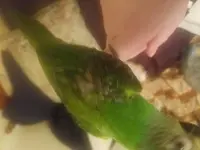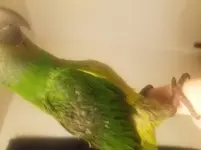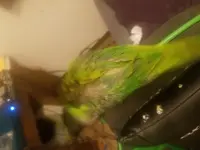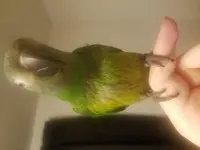NightScream84
New member
- Jan 3, 2020
- 3
- 0
Hello, fellow parrot people, I have an almost 10-month-old dusky conure which seems to be starting his first molt a few feathers have fell to the bottom of his cage but something has me concerned. When he preens himself individual barbules are coming off, and it looks like a bunch of eyelashes when they fall on a white surface. Is it normal for molting feathers to do that before falling out? He seems to be healthy still, his droppings look normal he's still eating and drinking normally and he seems very happy and wants to spend time with me still the same as he did before he started molting. But I know birds also do there best to hide illness until it's too late. Any information would be greatly appreciated thanks.




